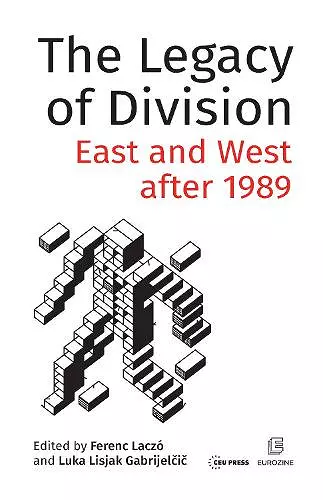The Legacy of Division
East and West after 1989
Ferenc Laczó author Luka Lisjak Gabrijelcic editor
Format:Paperback
Publisher:Central European University Press
Published:15th Oct '20
Should be back in stock very soon

This volume examines the legacy of the East–West divide since the implosion of the communist regimes in Europe. The ideals of 1989 have largely been frustrated by the crises and turmoil of the past decade. The liberal consensus was first challenged as early as the mid-2000s. In Eastern Europe, grievances were directed against the prevailing narratives of transition and ever sharper ethnic-racial antipathies surfaced in opposition to a supposedly postnational and multicultural West. In Western Europe, voices regretting the European Union's supposedly careless and premature expansion eastward began to appear on both sides of the left–right and liberal–conservative divides. The possibility of convergence between Europe's two halves has been reconceived as a threat to the European project.
In a series of original essays and conversations, thirty-three contributors from the fields of European and global history, politics and culture address questions fundamental to our understanding of Europe today: How have perceptions and misperceptions between the two halves of the continent changed over the last three decades? Can one speak of a new East–West split? If so, what characterizes it and why has it reemerged? The contributions demonstrate a great variety of approaches, perspectives, emphases, and arguments in addressing the daunting dilemma of Europe's assumed East–West divide.
"The overthrow of communism was peaceful in the majority of Central and Eastern European countries. Most citizens of East Central Europe viewed membership in the European Community as a prized goal that will aid rapid improvement in their standards of living, seamless inclusion in the European Market, and a democratic political system. While some economic successes cannot be denied, transformation was slow and unequal. After the global financial crisis of 2008, economic liberalism became burdened with statism, paternalism and oligarchic rule; and the crony model of capitalism or elements of authoritarianism (“illiberal democracy”) reappeared. Therefore, largely, the conclusion drawn by most of the contributors for The Legacy of Division is that new curtains have appeared, but these are made of much lighter materials than the old Iron Curtain."
-- Susan Glanz * Hungarian Cultural StudiISBN: 9789633863749
Dimensions: unknown
Weight: unknown
344 pages